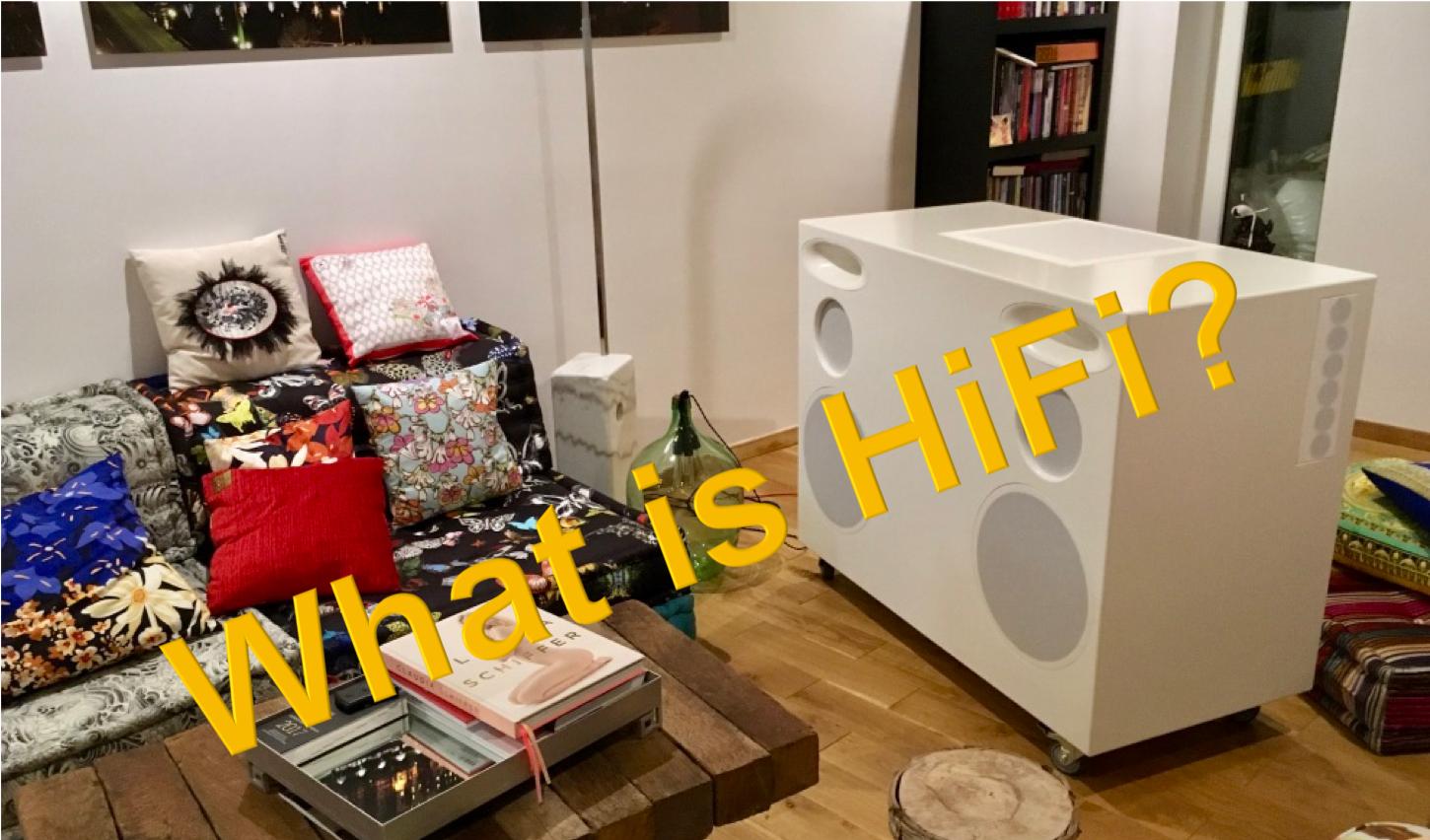
The origin of the idea TestHiFi
I have turned into an audiophile
The idea TestHiFi started several years ago, when I wanted to listen to better music. I was fed up with the wishy washy, just ok, and loud enough sound of my Bluetooth speaker. It was anyway a high-class Bluetooth speaker of a very well-known brand. But it does not allow you to hear all the details of a good recording. This system creates neither an identifiable instrument stage nor a real stereo feeling. Hence, I was up for something new and ended up with a self-build, one cabinet stereo, flexible high-end system. This system is on wheels so I can move it around my flat. Whenever I position it new, I also adjust digitally the sound until the room influences are well compensated. This always requires a measurement of the sound.
I became an audiophile nerd by now. Many of my friends and my colleagues asked me, why I am so much into HiFi music now. When answering this question, I found out, it is not so easy to explain. I also found out, that there is nothing in place to refer to, or to describe what HiFi is. The ordinary non-audiophile person gets wide-open eyes of non-comprehension or quickly moves on to another topic. I thought, it was time to create something that enables everybody to understand easily what HiFi is.
The RMAF 2017 movie about MQA
Those acronyms can drive you crazy. There is a Rocky Mountains Audio Festival taking place annually. They publish some of their presentations on youtube. I saw a movie of the RMAF 2017 on Master Quality Authenticated last year. They were discussing about the only partially existing HiFi standards, like MQA and others. It got into me and inspired for actions! All the often used and the often less understood acronyms deceive us to think they would describe a quality standard of the HiFi we listen to. A HiFi standard. However, they usually describe only one link of the whole chain from recording to playback. Vinyl or FLAC, high-resolution, MQA, tubes vs transistors, class A or class D, horns or electrostatic speakers or you name it. None of those describes a minimum standard for what we listen to. All of those may have a significant impact on what we listen to. I wanted to have a HiFi standard for everybody to check their own audio system. And of course, totally independent from any brands or advertising. Now TestHiFi is there!
Today the TestHiFi App can successfully test HiFi
People have been looking for simple HiFi test solutions, or just respective criteria to differ between good and bad HiFi for decades. So, I thought it is time to think differently and creatively on this challenge. We came up with a stunning solution, which is also a very good start for a potential new HiFi standard.
Instead of trying to differentiate a very good system from an even better one, we started by looking at the bad systems first. We have defined a set of negative criteria and look for them in the playback of the music systems. If we find out that the system has flaws, it is not HiFi.
TestHiFi has a variety of negative criteria which are checked after sending a special test signal. This signal is sent, recorded and analyzed at the same time with a mobile device (iPhone). The outcome is a RAG rating, i.e. red for not HiFi (many flaws), amber for close to HiFi (few flaws) and green for HiFi no flaws identified. The test is based on three measurement positions in order to minimize room influences to the maximum possible extend. Finally, after various quality checks, we successfully developed a stable test system with very robust test results also in changing environments.
A potential new HiFi standard created by TestHiFi
Now imagine, there is a TestHiFi system available, differentiating bad systems from potentially good systems. Imagine further, it would be an App available for everybody. TestHiFi simply rates HiFi capability red, amber or green, respectively for seven criteria. This can derive a new HiFi standard.
TestHiFi ratings could be as easy as a TV 4K symbol and TestHiFi is producer independent.